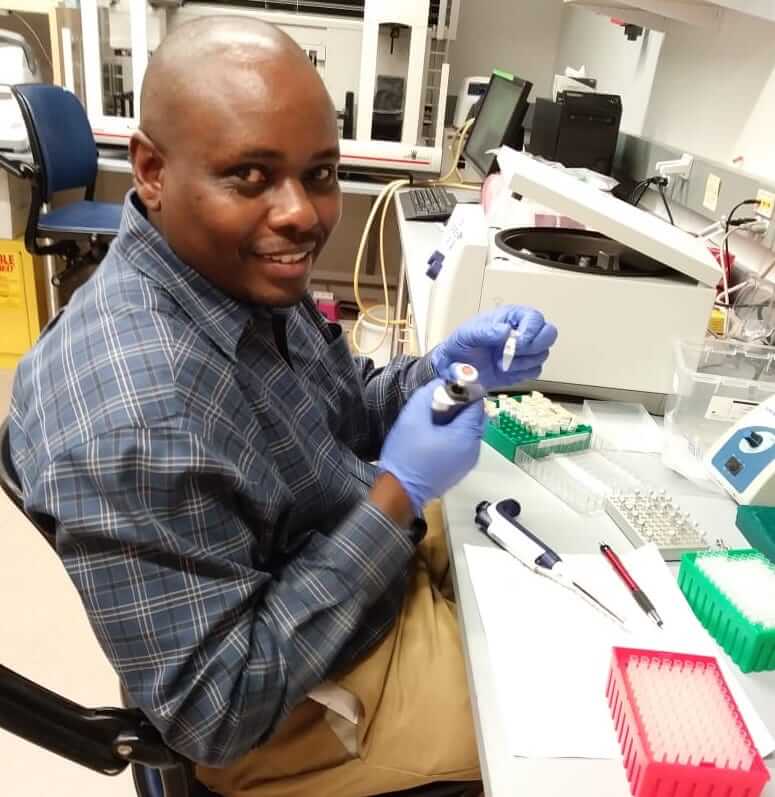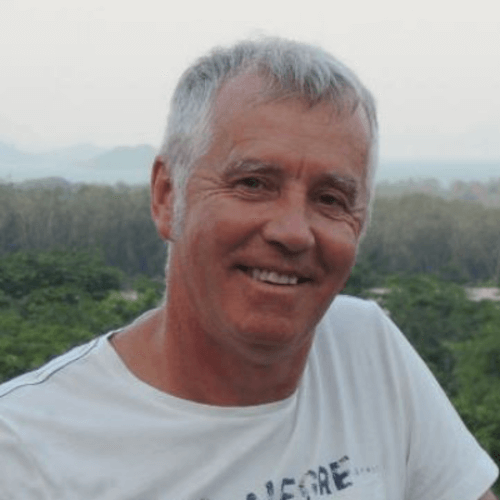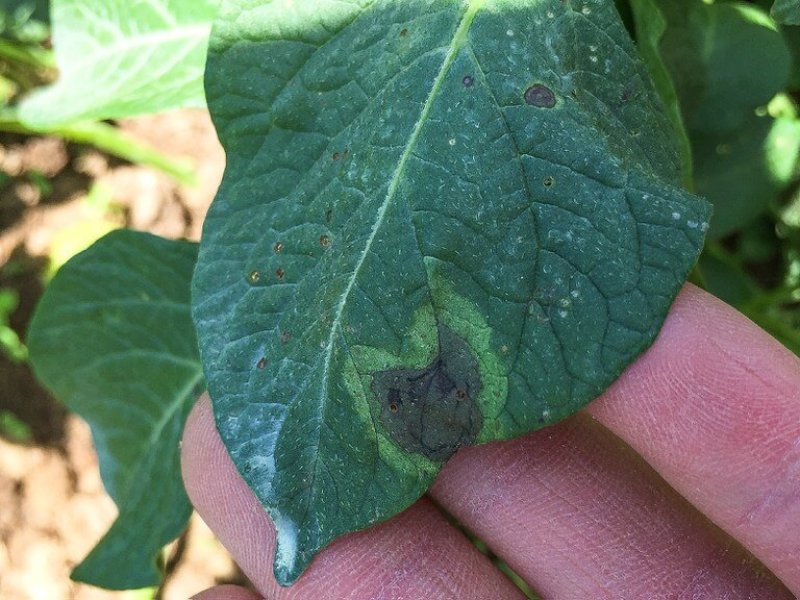Late potato blight is the most destructive potato disease in the world costing developing countries USD 10 billion every year. This CIP@50 story digs into a new rapid-fire approach to potato breeding that makes farmer-favorite varieties resistant to late blight, which could increase profits by at least 40% wherever potato is cropped. The secret? The latest biotech methods mixed with the oldest breeding trick in the book – harvesting the wild genes of the potato’s distant ancestors.
A blight on the landscape
“Potato is a quick source of money. If you grow it, it matures fast. It is easy to sell. It brings income.”
For Herbert Magara Nkuba, a Ugandan potato farmer, the future looks bright. Demand for his Victoria potatoes is increasing, particularly from lucrative urban markets. However, a destructive fungal-like disease – late blight – has taken root on his farm. He is not alone. Late blight disease has maintained its place as the number one impediment for potato farmers since causing the Irish potato famine in the 1840s. It costs potato farmers in developing countries an estimated USD 10 billion per year globally in crop loss and agrochemicals.
“In Uganda, 300,000 farmers depend on potato for income generation and food. Late blight significantly reduces family incomes and poses risks to human and environmental health,” says Dr. Eric Magembe, a Research Scientist with the International Potato Center (CIP). “Unfortunately, the varieties most popular with farmers and consumers, like Victoria, are particularly susceptible to it.”

Efforts by smallholders to tackle outbreaks with fungicides are often ineffective. “Some farmers spray 12 times in one season, costing a quarter of the total value of their harvest,” explains Abel Arinaitwe, a Research Officer with the National Agricultural Research Organisation in Uganda (NARO). “To save money, they may use less spray than they should, or wait until the blight appears. At that point, it’s too late and outbreaks can take 60% of a farmer’s crop. On top of this, many farmers don’t use protective equipment.”
Keeping it in the family
CIP scientists set to work to make Victoria resistant to late blight taking three resistant genes from Mexican and Argentinian wild potato relatives and transferring those genes into five farmer-favorite potato varieties used across sub-Saharan Africa, including Victoria.
Crop wild relatives are genetically related to domesticated crops. Untended by humans, they continue to evolve in the wild, developing traits such as drought tolerance or pest resistance. They have been valued by farmers since the beginnings of agriculture as a source of traits to produce new varieties using traditional breeding methods.
“As the pathogen continually evolves, we needed to act fast,” says Dr. Marc Ghislain, Senior Biotechnologist, CIP. “Conventional breeding is just too slow. Biotechnology puts varieties in farmers’ fields much more quickly. In just three years, we have improved Victoria – called 3R Victoria – that can now grow without a single spray of fungicide”.

Meet the new one – same as the old one
For uptake, it is also critical that improved varieties retain the characteristics of the old ones.
“We brought farmers to the field trials so they could see the differences between the biotech and the original varieties of Victoria,” continues Ghislain. “The first set of plants was green and healthy, while the second was completely dead. The farmers were impressed and also pleased that they could recognize familiar traits – from the shape of the tubers to the color of the skin. It was the variety they were used to.”
Experts estimate that uptake could reach an impressive 50% within the next 15 years. Farmers will be free to access the improved varieties as they do now, by saving or exchanging seeds with neighbors, or buying them from local providers.
Women farmers will also have more incentive to adopt late blight-resistant varieties. “Removing the need for pesticides makes potatoes less expensive and laborious for women to cultivate. They will be able to go back into production and earn money to cover costs like school fees and health care,” says Dr. Barbara Zawedde, Coordinator, Ugandan Biosciences Information Center.
From trial plots to farmers plots
Alongside the work in Uganda, the improved varieties will be tested and released following regulatory approval in Ethiopia and Nigeria. In sub-Saharan Africa, as across much of the world, acceptance of crops created using new biotechnologies is still not uniform, even though most countries are testing them in labs, greenhouses, and field trials.
Genetic engineering technologies represent a critical tool within a much wider food systems approach adopted by CIP to benefit more than 2 million farmers in Africa and Asia. Innovations to increase yields and incomes include quality potato seed, improved crop management, and value chain approaches. Accelerated breeding is a tool that will be a cornerstone in One CGIAR’s refreshed research and innovation strategy to transform food, land, and water systems in a climate crisis.
As Arinaitwe sums up: “To me, it will be a wonderful day when these potatoes get into the hands of farmers.”































